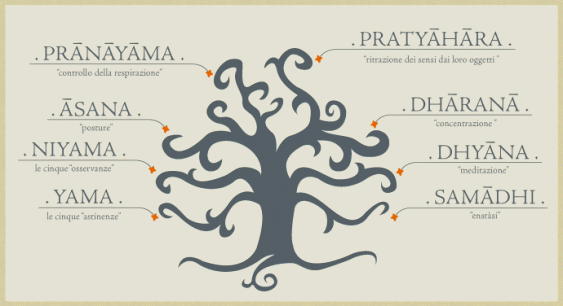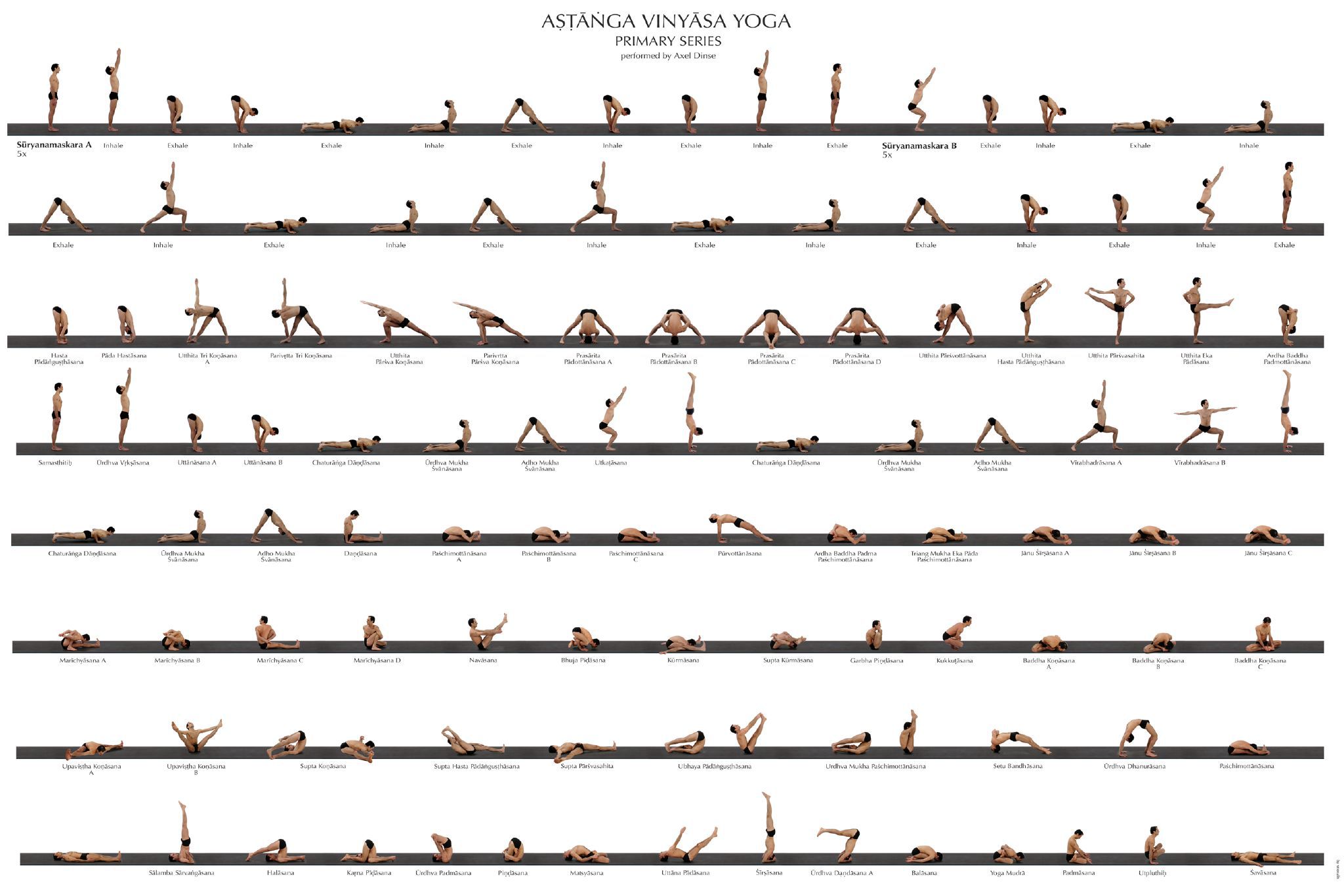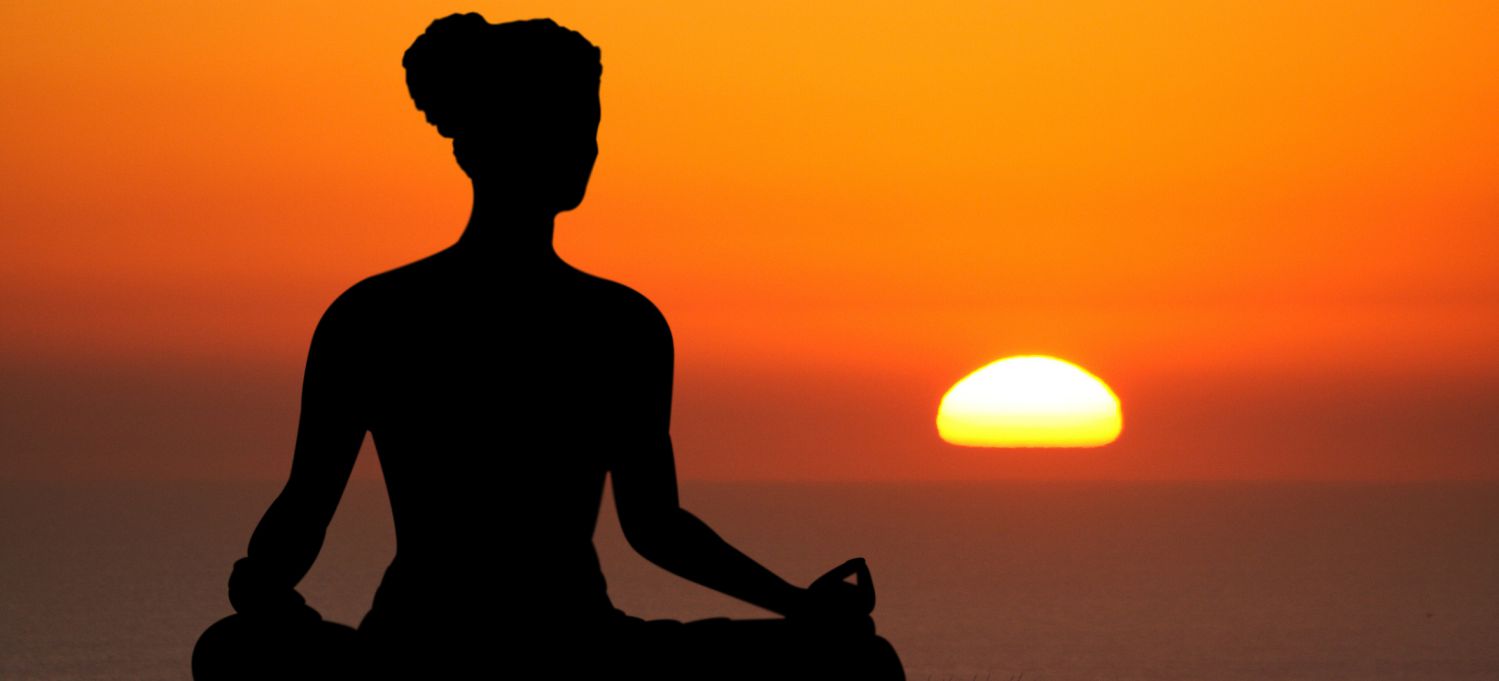No products in the cart.
In Sanskrit “Ashta + anga” is Ashtanga. “Ashta” means Eight and “Anga” is limbs so it means Eight Limb path. Ashtanga yoga is based on Yoga Philosophy of Patanjali. It is a specific yoga tradition, but at the same time Ashtanga Yoga can be seen as covering all aspects of yoga within any yoga tradition.
Ashtanga Yoga is often called Patanjali Yoga, referring to Maharishi Patanjali, the ancient author of the famous Patanjali yoga sutras that describe Ashtanga Yoga. Historians place the writing of these scriptures at around 200 B.C., but the original is probably thousands of years older. These teachings belong to an oral tradition, passed on unchanged by memorization of the verses in which their wisdom was captured. More recently (15th century) the term Raja Yoga is also often used instead of Ashtanga Yoga, meaning “royal yoga”.
The 8 limbs of Ashtanga yoga, described as practices

- Yama – the five restraints or the “don’ts”
- Ahimsa – Non-violence
- Satya – Truthfulness
- Brahmacharya – Control of the senses and celibacy
- Asteya – Non-stealing
- Aparigraha – Non-covetousness and non-acceptance of gifts
- Niyama – the five observances or the “do’s”
- Saucha – Purity, cleanliness
- Santosha – Contentment
- Tapas – Austerity
- Swadhyaya – Self-study, study of scriptures
- Ishwara Pranidhana – Surrender to God’s will
- Asana – Steady posture
- Pranayama – Control of prana or life force
- Pratyahara – Withdrawal of the senses
- Dharana – Concentration
- Dhyana – Meditation
- Samadhi – Super-conscious state
The Five Yamas
It should be noted that all yamas should be practiced in the spirit and by the letter. Furthermore they should be applied in deeds and words, as well as thoughts. Perfection in any of them is for the very few but much progress can be made in a given lifetime. Also they should each be practiced in relation to each other. Sometimes they will seem to conflict and much soul searching will be needed to know how to act righteously (according to dharma).
Ahimsa
Ahimsa, or non-injury, implies non-killing. But non-injury is not only non-killing, it is much more than that. More comprehensively, ahimsa means “entire abstinence from causing any pain or harm whatsoever to any living creature, either by thought, word or deed. Non-injury needs a harmless mind, mouth and hand. Ahimsa is not mere negative non-injuring. It is positive, cosmic love.”(Swami Sivananda, Bliss Divine)
Satya
Satya is truthfulness. It is more than just telling the truth. One’s actions should be in accordance with one’s words and thoughts. God and man’s true Self are truth, and in order to tune in with that consciousness we need to live truthfully at all times. Furthermore lying creates many thoughts in the mind which go against the raja yoga objective of calming the mind.
Brahmacharya
Brahmacharya has two main meanings. In the broad sense it means control of the senses or indriyas. More specifically it refers to celibacy or chastity. Like all traditional spiritual traditions, yoga advocates restraining from indulging in sensual gratification. One of the many reasons is that practicing the higher limbs of ashtanga yoga – dharana, dhyana, samadhi – requires a tremendous amount of energy or prana. This energy is built up through the practices of yoga such as asanas, pranayama and japa but is dissipated during sensual enjoyment. Of all the sensual activities, sex is the one that will be the most depleting to the psychic and nervous system. Most people don’t like to hear this but, like the other yamas, everyone should practice brahmacharya to the best of their ability. It is a fact that the more people gratify their senses, the less energy they have and the less ability they have to meditate on the absolute.
Asteya
Asteya is non-stealing. This one is pretty self-explanatory. However, it is good to bear in mind that there are many subtle ways to appropriate what does not belong to us. As for the other yamas, much self-analysis will be necessary to catch the subtle lower tendencies of our mind.
Aparigraha
Aparigraha is non-covetousness. This involves being happy and content with what we need and not always coveting unnecessary and luxury items. To possess more than we need is a violation of this precept. Note that aparigraha includes the notion of not accepting gifts that would bind us to the giver.
The Five Niyamas
Saucha
Saucha is purity. The deepest and most subtle aspect of Saucha is purity of thoughts and feelings. But it also means cleanliness of the body, which for hatha yogis includes the internal cleansing practices known as kriyas. A yogi must also keep his surroundings (home, car, workplace, etc.) very tidy and clean. Purity is the essence of the sattvo guna, of paramount importance to meditate successfully.
Santosha
Santosha is contentment. This is the ability to recognize that although it is important to try to better our environment and life situation through proper effort, the world around you is never going to be perfect and absolutely to our liking. Therefore the raja yogi should be happy with what he has and endeavor to do the best he can with what he has got.
Tapas
Tapas is austerity. The luxury and comfort of our modern society, with all its advantages, makes our mind soft and weak. To strengthen ourselves physically and mentally we must practice austerities. The highest tapas is meditation on God or the divine Self. Daily practice of yogic disciplines is considered tapas. A very good practice is fasting.
Swadhyaya
Swadhyaya literally means study of the Self. The main practice is the study of the yogic scriptures but it also includes japa (mantra repetition). Not any yoga or spiritual book qualifies as proper material for swadhyaya. For a vedantin the best scriptures are the Upanishads, the Bhagavad Gita and the Brahma Sutras. There are also many other scriptures such as the Puranas, the Ramayana, the Mahabharata, etc. Next come the books written by great mystics or masters such as Swami Sivananda, Swami Vishnu-devananda, or other saints from all traditions. Also suitable are books written about these masters – biographies.
Ishwarapranidhana
Ishwarapranidhana is surrender to God’s will and devotion. All ethical and moral precepts of yoga culminate here.
Asana

Keeping in mind that the objective of raja yoga is to calm the mind down, this is only possible if one has control of the physical body. Body and mind are intimately connected and if the body is agitated the mind will be agitated as a result. In order to meditate successfully one must develop a very steady posture. Furthermore the posture must be kept still for a long time and therefore it needs to be extremely comfortable. When the meditator is not able to control his mind, he is advised to practice the asanas of hatha yoga in order to gain the needed mastery.
Pranayama
The raja yoga theory tells us that prana is animating the mind. Very much like the wind creates the motion of the leaves, prana creates the motion of the mind which gives rise to the vrittis. Air is the primary physical medium of prana and breathing is our best method to gain control over the prana. To meditate, the practitioner should calm his breath down until it is very shallow and even. If this is not possible he should practice the different pranayamas of hatha yoga.
Pratyahara
Pratyahara is the withdrawal of the senses from their objects. The natural tendency of the senses is to go out towards the objects of the world. In doing so they pull the mind out and away from the inner Self and create powerful waves on the lake-mind. Therefore, the yogi must be able to pull the senses within if he is to keep a balanced and peaceful mind.
The analogy given to us is that of the tortoise which, under perceived danger, pulls in all its limbs and head.
Dharana
Concentration. One-pointedness. The meditator is fully focused on the object of concentration, his mind as still as the flame of a lamp in a windless room. When this state is maintained long enough, it will lead to dhyana.
Dhyana
Dhyana is translated as meditation. It is a natural flow of thought or consciousness between the meditator and the object of meditation. It is a very joyous state and is compared to the flow of oil from one vessel to the next. Very natural and effortless.
In dhyana there is still duality of consciousness which is the feeling of separation between the meditator and the object of meditation. When maintained long enough this state will lead to the highest rung of the ladder of ashtanga yoga which is samadhi.
Samadhi
As described by Swami Sivananda this is “The state of consciousness where Absoluteness is experienced attended with all-knowledge and joy; Oneness; here the mind becomes identified with the object of meditation; the meditator and the meditated, thinker and thought become one in perfect absorption of the mind.”
Much practice is necessary to attain this stage. Regular (daily practice) of all these eight limbs is absolutely necessary.
Setting Yourself on the Path of Ashtanga Yoga
Each of the eight steps of Ashtanga Yoga has to be mastered to a certain degree, before mastering the next step can be successfully attempted. Some steps however can also be skipped to some degree, for example by going straight to Dharana without attention to Pratyahara, as withdrawal from the outside world automatically happens when succesfully focusing on an inside object. If Dharana is not strong enough however, it must be preceded by Pratyahara. Thus the eight steps of Ashtanga Yoga are also eight disciplines and eight phases of growth in yoga and meditation. At the same time, the eight steps can also been seen as the feet of a table with 8 feet : it is not because a step is mastered that it can be forgotten or neglected. Ashtanga literally means asht-anga or eight limbs.
In a way, when moving through steps 1 to 8 and then again coming out of meditation, step 1 and 2 start again. Whatever is learned in meditation may then be helpful to get better results with Yama and Niyama. Thus the eight steps also represent a continous circular movement or rather an upward spiraling movement. When Yama and Niyama become natural and effortless, it is the best sign of true progress on the path of Ashtanga Yoga.






